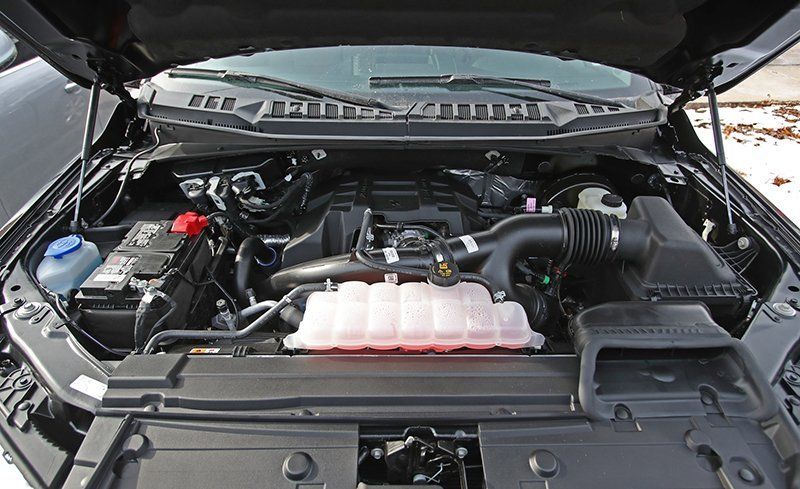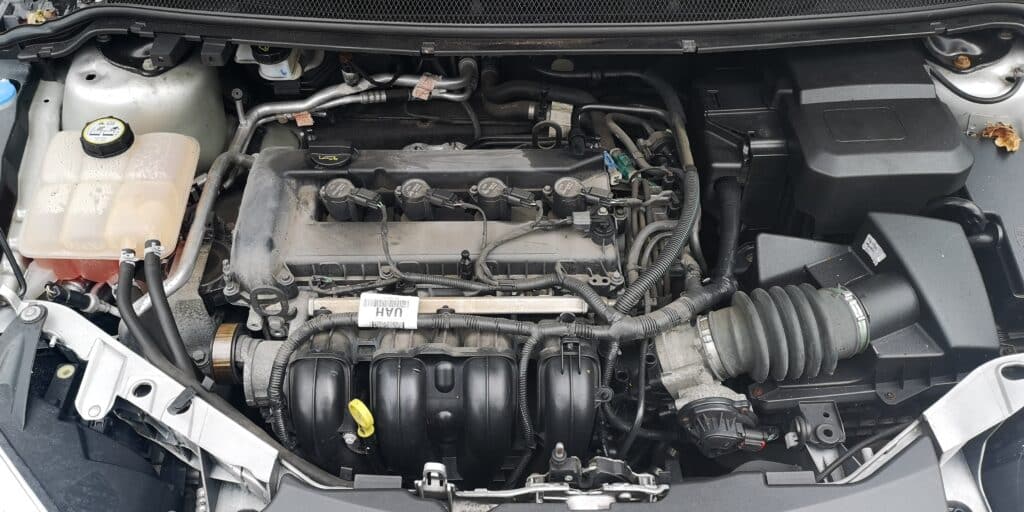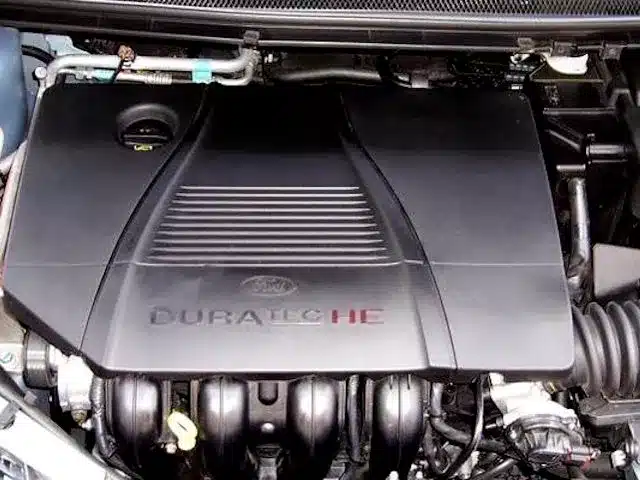Welcome to the realm of engineering excellence, where precision meets power in the form of the Ford Duratec Ti-VCT 1.6 125 hp engine. This powertrain is not just a component of your vehicle; it’s the heart that pulsates with innovation and reliability, setting the standard for what drivers expect from their engines.
The Duratec Ti-VCT technology is a testament to Ford’s commitment to pushing the boundaries of what’s possible under the hood. Ti-VCT stands for “Twin Independent Variable Camshaft Timing”—a sophisticated system allowing precise control over valve timing.
This technology is the maestro behind the music, orchestrating a symphony of moving parts to deliver optimal performance. By adjusting the timing of the intake and exhaust camshafts separately, Ti-VCT maximizes engine efficiency across the entire rev range. This results in increased horsepower, improved torque, and reduced emissions, all while enhancing fuel economy.
Whether you’re accelerating onto a highway or cruising down a country lane, the Duratec engine adapts in real-time to deliver smooth, responsive power.
Evolution of the 1.6 125 hp Variant
From its inception, the 1.6 125 hp variant of the Duratec engine has evolved to become a paragon of power and efficiency. Initially introduced to provide a balance between economy and performance, this engine has undergone continuous refinement to meet the increasing demands of modern drivers. Its 125 horsepower rating might seem modest on paper, but it translates to a lively and spirited driving experience behind the wheel.
The 1.6-liter displacement, fine-tuned with the help of Ti-VCT technology, provides a surge of acceleration that belies its efficient nature, making it an ideal engine for both bustling city traffic and open-road adventures.
Ford 1.6 Ti-VCT Specs
Embarking on an in-depth journey into the heart of the Ford Duratec Ti-VCT 1.6 125 hp engine reveals an impressive array of technical specifications that merge to create a seamless driving experience. Below, we meticulously dissect the engine’s capabilities, showcasing the intricacies that make it a formidable force in the automotive world.
| Specification | Detail |
|---|---|
| Engine Type | Inline 4-cylinder DOHC |
| Displacement | 1.6 liters |
| Horsepower | 125 hp @ 6000 rpm |
| Torque | 159 Nm @ 4000 rpm |
| Bore x Stroke | 79.0 mm x 81.4 mm |
| Compression Ratio | 11.0:1 |
| Fuel System | Multi-point fuel injection |
| Valve Gear | Twin Independent Variable Camshaft Timing (Ti-VCT) |
| Emission Standard | Euro 5 compliant |
The Duratec 1.6 125 hp is a marvel of modern engineering, boasting a robust and refined configuration. Its 4-cylinder layout has 16 valves, ensuring a smooth and efficient power flow. The engine’s dual overhead cam design (DOHC) is paired with the revolutionary Ti-VCT system, allowing for independent valves’ timing, resulting in a more dynamic power delivery and improved fuel economy.
With a horsepower peak of 125 hp at 6000 rpm, the engine demonstrates a sprightly character, eagerly responding to the driver’s input. The torque, a measure of the engine’s twisting force, peaks at 159 Nm at 4000 rpm, ensuring that the vehicle has ample pulling power for acceleration and overtaking. This balance of horsepower and torque offers an exhilarating and practical drive for everyday use.
The compact dimensions of the Duratec 1.6 125 hp engine contribute to its versatility, allowing it to be housed comfortably in various vehicle models without compromising on space for the driver or passengers. The engine’s size is a testament to Ford’s commitment to space efficiency and intelligent design.
Engine Reliability and Lifespan
Regarding longevity, the Ford Duratec Ti-VCT 1.6 125 hp engine is a testament to durability and endurance. Engineered to withstand the rigors of daily driving, this powerplant is designed with longevity in mind, offering a lifespan that frequently surpasses the 150,000-mile mark with proper care and maintenance.
Ford is dedicated to ensuring top-notch quality for its engines, and the Duratec 1.6 125 hp engine is no exception. With advanced manufacturing processes and the use of high-quality materials, this engine boasts robust construction, ensuring a long and reliable service life.
With regular servicing and preventive maintenance, drivers can expect consistent performance on a daily basis, making it an ideal and trustworthy choice for those who value peace of mind.
Despite its robust design, like any engine, the Duratec 1.6 125 hp is not immune to wear and tear. Some of the common concerns that may arise over its lifetime include issues with the cooling system, variable valve timing components, and ignition system. These are typically the result of regular use and can be mitigated through attentive care.
Maintenance Tips for Enhanced Durability
To maximize the engine’s lifespan, adhere to the following maintenance tips:
- Timely Oil Changes: Regularly replacing the engine oil with the manufacturer-recommended grade can significantly reduce wear on internal components.
- Cooling System Care: Ensuring that the coolant is at the proper level and that the cooling system is functioning correctly can prevent overheating, which is crucial for engine health.
- Regular Inspections: Periodic inspections of the timing belt or chain, spark plugs, and air filters can prevent small issues from becoming major problems.
- Use Quality Parts: Always opt for high-quality or OEM parts during repairs to maintain optimal engine performance.
Notable Engine Problems and Troubleshooting
The Ford Duratec Ti-VCT 1.6 125 hp engine, renowned for its balance of power and efficiency, does not escape the inevitability of mechanical issues that can arise with any complex machinery. Recognizing common issues and understanding the basics of diagnosis can extend the engine’s lifespan and ensure its optimal performance.
Common Issues in Duratec 1.6 125 hp Engines
Several notable issues have been documented among Duratec 1.6 engines that owners should be vigilant about:
- Cooling System Failures: The Duratec 1.6 is sometimes overheated due to thermostat housing leaks or water pump failures. Overheating can lead to severe engine damage if not addressed promptly.
- Variable Valve Timing (VVT) Complications: The VVT system, integral for engine efficiency, can suffer from oil flow issues due to clogged passages or faulty solenoids, which may result in rough idling or loss of power.
- Ignition Misfires: Spark plug degradation or ignition coil failures can lead to misfires. Symptoms include rough running, reduced fuel efficiency, and the engine management light illuminating.
Diagnosing Duratec Engine Problems
Accurate diagnosis is the first step in resolving engine problems effectively. Here are diagnostic tips for common issues:
- For Overheating: Check for leaks in the cooling system, assess thermostat operation, and ensure the water pump functions correctly.
- For VVT Issues: Monitor oil levels and quality, check for VVT solenoid operation, and use a diagnostic scanner to pinpoint any error codes related to the timing system.
- For Misfires: Inspect spark plugs for wear, test ignition coils, and scan for error codes indicating which cylinder is misfiring.
When troubleshooting the Duratec 1.6 125 hp engine, consider the following expert advice:
- Use a Systematic Approach: Begin with a visual inspection and progress to more complex tests like compression or leak-down tests if necessary.
- Invest in Diagnostics: A quality OBD2 scanner can be invaluable in quickly identifying error codes and streamlining the diagnostic process.
- Preventive Maintenance: Regularly replace service items such as spark plugs and filters to minimize the risk of issues.
- Professional Insight: For complex issues related to the VVT system or internal engine components, consult a professional mechanic with Ford engine experience.
Engine Oil Essentials
The lifeblood of any engine is its oil, serving as a vital component in maintaining the performance and longevity of the engine. For the Ford Duratec Ti-VCT 1.6 125 hp, adhering to the recommended oil specifications and change intervals is essential for keeping the engine running smoothly.
Ford recommends using fully synthetic oil for the Duratec 1.6 125 hp engine, with a viscosity grade of 5W-20. This type of oil is ideal for its ability to provide excellent lubrication across a wide temperature range, ensuring that the engine components remain well-protected whether the engine is cold at startup or hot after a long drive.
Synthetic oil also contains detergents that help to keep the engine clean by preventing the buildup of sludge and deposits.
Oil Capacity and Change Intervals
The Duratec 1.6 125 hp engine has an oil capacity of approximately 4.3 liters (4.54 quarts) when the filter is changed alongside the oil. It is crucial to adhere to the manufacturer’s recommended oil change intervals to maintain engine health. Oil changes should be performed every 10,000 miles or once a year for this engine, whichever comes first.
Regular oil changes ensure the engine is lubricated with fresh oil, which possesses full protective properties.
The quality of engine oil plays a pivotal role in the health and efficiency of the engine. High-quality, fully synthetic oil provides superior thermal stability, reduces friction and wear on moving parts, and ensures that the variable valve timing system operates efficiently. Neglecting oil quality can lead to increased engine wear, reduced fuel economy, and engine failure.
Fuel Economy Insights
The Ford Duratec Ti-VCT 1.6 125 hp engine is designed for performance and fuel efficiency. Understanding the fuel consumption rates and adopting strategies for fuel efficiency can lead to significant savings and a reduced environmental footprint.
The Duratec 1.6 125 hp engine’s fuel consumption balances its power output and the efficiency of the Ti-VCT technology. On average, this engine achieves an estimated combined fuel economy of around 40 miles per gallon (mpg), which can vary depending on driving conditions and habits.
In urban settings with frequent stopping and starting, this figure may lower slightly, while it may improve on the highway, with consistent speeds and smoother acceleration.
Tips for Optimizing Fuel Efficiency
Enhancing the fuel economy of your Duratec 1.6 125 hp engine can be achieved with the following tips:
- Maintain Steady Speeds: Avoid sudden accelerations or decelerations. Use cruise control where appropriate to maintain a constant speed.
- Regular Maintenance: Keep your engine running smoothly with regular tune-ups and by adhering to the maintenance schedule.
- Tire Pressure: Ensure your tires are inflated to the manufacturer’s recommended levels to reduce rolling resistance.
- Weight Reduction: Remove unnecessary items from the vehicle to lower weight and reduce fuel consumption.
- Use Quality Fuel: Opt for high-quality fuel to keep the engine clean and efficient.
- Gear Optimization: If driving a manual, shift up early to keep RPMs lower, and if in an automatic, allow the car to shift smoothly by easing on the throttle.
- Aerodynamics: Remove roof racks when not in use and keep windows closed at high speeds to reduce drag.
Ignition System Overview
The ignition system of the Ford Duratec Ti-VCT 1.6 125 hp engine is a critical component in its overall performance, ensuring that the fuel-air mixture within the cylinders is ignited efficiently and at precisely the right moment. Understanding the firing order and the importance of correct spark plug selection and gap settings is essential for maintaining the engine’s smooth operation.
The firing order of an engine is the specific sequence in which each cylinder receives a spark to ignite the fuel-air mixture. For the Duratec 1.6 125 hp, the firing order is 1-3-4-2. This sequence is carefully engineered to balance the engine’s operation, minimizing vibrations and ensuring optimal smoothness while distributing power evenly.
The firing order is determined by the engine’s configuration and the crankshaft design, and adhering to this order is paramount; any deviation can result in reduced performance, increased emissions, and even engine damage.
Spark Plugs: Selection and Gap Settings
Spark plugs are one of the most vital components of the ignition system. For the Duratec 1.6 125 hp engine, it is recommended to use iridium or platinum-tipped spark plugs because of their durability and ability to provide consistent spark over an extended period.
The correct spark plug gap the distance between the center and ground electrodes, is crucial for proper ignition. This engine’s recommended spark plug gap is typically set between 1.0 and 1.2 millimeters (0.039 to 0.047 inches). This precise gap ensures that the spark plugs produce a strong enough spark to ignite the fuel-air mixture efficiently but not so strong as to cause excessive wear on the spark plug itself.
It’s worth noting that the gap may change over time due to normal spark plug wear. Hence, checking the spark plug gap during regular maintenance intervals is important. If the gap is too small, the spark may be too weak, leading to incomplete combustion and a loss of efficiency.
Conversely, the ignition system may struggle to generate a strong enough spark if the gap is too wide, leading to misfiring and potential engine damage.
Timing System Details
The timing system is a fundamental component of the Ford Duratec Ti-VCT 1.6 125 hp engine, governing the synchronization between the rotation of the crankshaft and the camshaft. This synchronization ensures that the engine’s valves open and close correctly during intake and exhaust strokes.
The Duratec 1.6 125 hp engine utilizes a timing belt, which is preferred for its quiet operation and efficiency. The belt is made from a durable rubber compound that meshes with the camshaft and crankshaft gears. Its proper tension is maintained by a series of pulleys and a tensioner that ensures the belt remains aligned and does not slip.
Timing belts, while durable, do not last indefinitely and must be replaced regularly to prevent failure, which can lead to severe engine damage. For the Duratec 1.6 125 hp, it is recommended that the timing belt be replaced every 150,000 miles or every ten years, whichever comes first.
However, this can vary based on driving conditions and should be adjusted accordingly. Replacing the tensioner and pulleys simultaneously is advisable to ensure the entire timing system functions correctly.
Interference vs. Non-Interference Engine Dynamics
An important aspect to consider is whether an engine is an interference or non-interference type. The Duratec 1.6 125 hp engine is an interference engine, meaning that the space between the valves and pistons is minimal. If the timing belt fails, the valves and pistons can collide, leading to potentially catastrophic engine damage.
Cooling System and Air Filtration
Maintaining optimal temperature and clean air intake are crucial for the health and efficiency of the Ford Duratec Ti-VCT 1.6 125 hp engine. The cooling system and air filtration require regular attention to ensure the engine performs at its best.
The cooling system in the Duratec 1.6 125 hp engine uses a specific type of coolant to manage engine temperature and prevent overheating. The recommended coolant is a 50/50 mix of high-quality ethylene glycol or propylene glycol antifreeze and distilled water.
This mixture provides excellent thermal regulation across various operating conditions and helps protect against corrosion within the cooling system. The coolant should have a replacement interval of every 100,000 miles or five years, whichever comes first, to ensure it protects the engine effectively.
Maintaining the Engine Air Filter
The engine air filter is a gatekeeper for the Duratec 1.6 125 hp engine, ensuring that only clean air reaches the combustion chambers. A clean filter allows for optimal airflow, which is essential for maintaining fuel efficiency and engine performance. Over time, the air filter can become clogged with dirt and debris, reducing airflow, decreasing performance, and increasing fuel consumption.
Regular inspection and replacement of the air filter are recommended. Generally, the air filter should be replaced every 30,000 miles, but this interval can be shorter if the vehicle is frequently driven in dusty or polluted environments. A clean air filter helps to ensure a proper mixture of air and fuel, which is crucial for the engine’s power output and longevity.
FAQs
Q: What is the ideal spark plug gap for Duratec 1.6 engines?
A: The ideal spark plug gap for the Duratec 1.6 engine is typically set between 1.0 to 1.2 millimeters (0.039 to 0.047 inches). This precise measurement ensures that the spark plug produces an optimal spark for the combustion process, which is crucial for maintaining engine efficiency and performance. Always refer to the owner’s manual or a professional technician to confirm the correct specifications for your specific vehicle model and year.
Q: How often should the timing belt/chain be replaced?
A: The timing belt in the Duratec 1.6 125 hp engine should be replaced every 150,000 miles or every ten years, whichever comes first. This interval is crucial as the engine is an interference type, where a failure in the timing belt can lead to significant engine damage. Inspecting the belt periodically and replacing any related components like the tensioner and pulleys to ensure the system’s integrity is also advisable.
Q: Can the Duratec 1.6 125 hp engine use synthetic oil?
A: The Duratec 1.6 125 hp engine can use synthetic oil, which is recommended. Synthetic oil offers superior performance in terms of high-temperature stability, enhanced lubrication, and longer oil life. It also protects against engine wear, especially during extreme driving conditions. Be sure to use the correct viscosity grade as specified by Ford, which is typically 5W-20 for this engine.
Q: What are the signs of engine coolant issues?
A: Signs of engine coolant issues may include an overheating engine, visible coolant leaks under the vehicle, frequent coolant top-offs, or a strong coolant odor while driving. Inside the cabin, a heater that fails to warm up or fluctuating temperature gauges can also indicate problems. If the coolant is contaminated or the system is not properly maintained, it could lead to corrosion, blockages, and engine damage. Regularly check your coolant levels and condition, and replace the coolant according to Ford’s recommended service intervals to avoid these issues.







